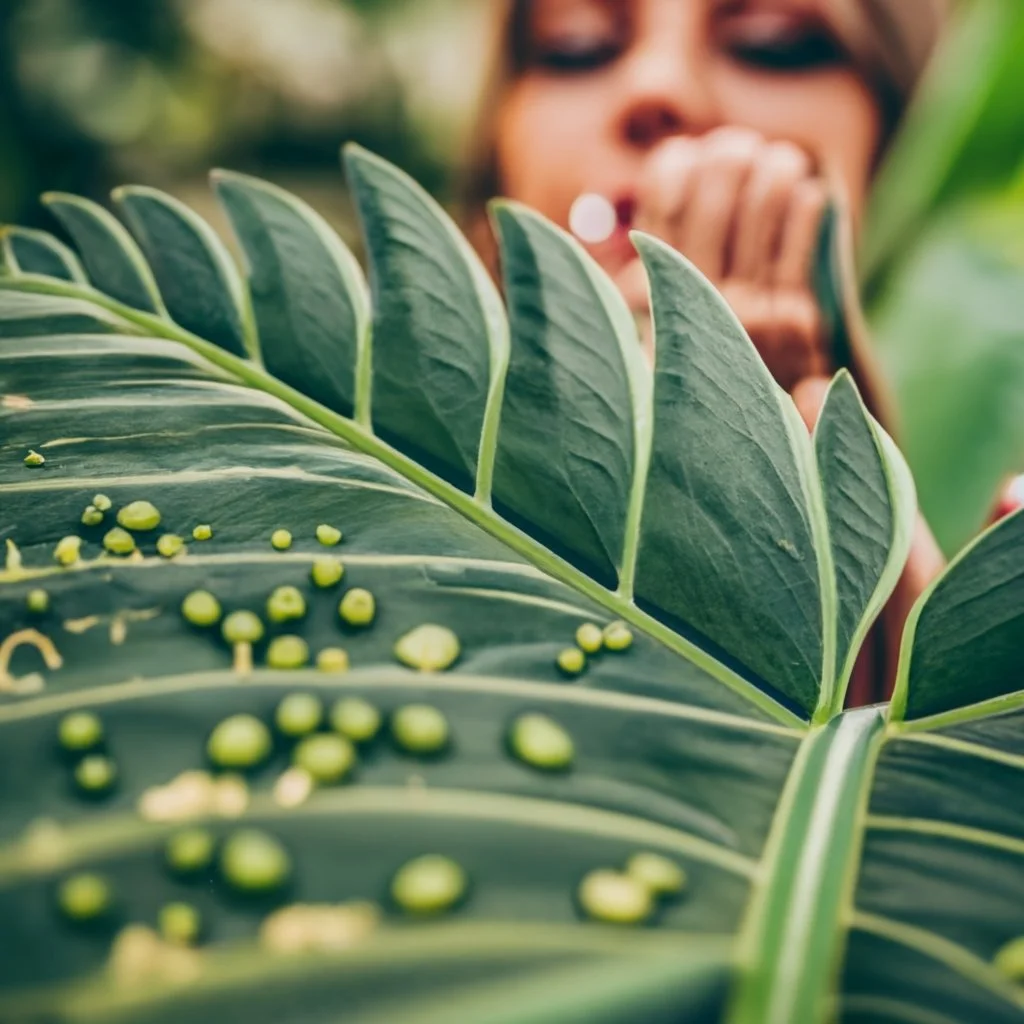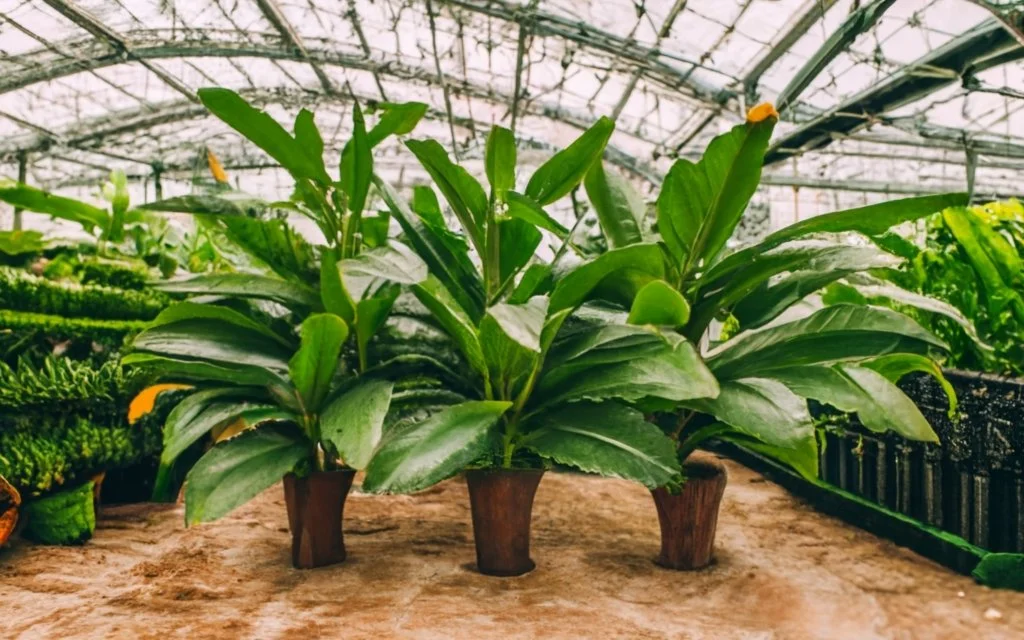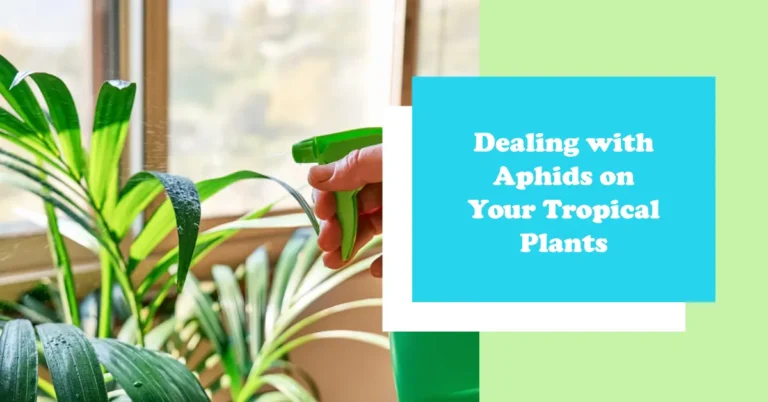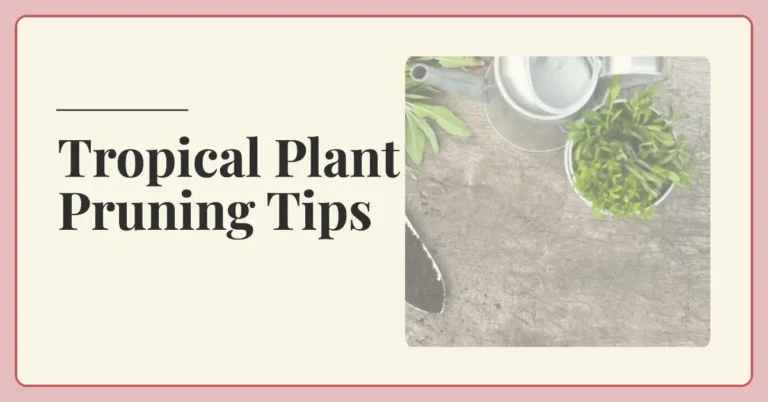Tropical Plant Fungal Diseases in 2023
Identifying and Managing Tropical Plant Fungal Diseases
When nurturing tropical plants, it’s vital to be cognizant of the different factors that can give rise to fungal diseases. Understanding the precursors can enable you to create an environment where your tropical beauties thrive sans diseases. Let’s dive deep into understanding what causes these diseases and how you can prevent them.

Causes of Fungal Diseases in Tropical Plants
Poor Air Circulation
A lack of air circulation can foster a humid environment, a hotbed for fungi proliferation. Ensuring there is enough space between the plants for air to circulate freely can be a preventative measure.
Excess Moisture
Overwatering and moisture accumulation on leaves can be an invitation to fungal infections. Maintaining an optimum moisture level is vital.
Wounds on the Plants
Damages on the plant surface can be an entry point for the fungi. Inspect the plants for any wounds or bruises and promptly take necessary actions.
Unsanitary Practices
Improper sanitation can facilitate the spread of fungal diseases from infected to healthy plants. Regular cleansing of pots and tools is a mandatory practice.
Nutrient Deficiency
A balanced nutrient supply can shield the plants against fungal attacks. Ensuring the soil is rich with necessary nutrients can fortify the plant’s defense mechanism.
Preventing the Onset of Fungal Diseases
Awareness and proactive measures are the primary defenses against fungal diseases in tropical plants. Below, we highlight some steps and best practices to keep your tropical plants vibrant and healthy:
- Airflow
Maintaining good airflow can prevent fungi from finding a home in your plants. - Avoid Overwatering
Balance is key; provide your plants with the necessary moisture without drowning them. - Sanitation
Regular cleaning of gardening tools and containers keeps fungal diseases at bay. - Nutrition
Proper fertilization, keeping in mind the individual needs of different plants, is crucial.
Symptoms of Fungal Diseases in Tropical Plants
Being able to identify symptoms early on is half the battle won. Here we list down common symptoms that should have you on alert:
- Discolored spots on leaves and stems
Manifesting in different hues — brown, black, yellow, or white, these spots are early signs of fungal diseases. - Powdery or fuzzy growths
Noticeable on the plant’s surface, they often indicate spore presence. - Wilting or drooping foliage
A disruption in water and nutrient absorption can cause this symptom. - Premature leaf drop
Leaves dropping prematurely might be a sign of a fungal attack weakening the plant’s structure.
Combatting Fungal Diseases
Winning against tropical plant fungal diseases is possible with the right strategy. Incorporate these methods into your daily care regimen:
- Regular Inspections
Carry out regular check-ups to catch signs of fungal diseases early on. - Optimal Growing Conditions
Offer your plants well-draining soil and appropriate sunlight and water amounts. - Proper Spacing
Provide enough space between your plants for better air circulation, thus reducing humidity and discouraging fungal growth. - Prompt Removal of Affected Parts
At the sight of any dying or dead parts, remove them promptly to avoid fungal breeding grounds.
By adhering to the above strategies, your tropical plants can remain vibrant and free from tropical plant fungal diseases, promising a lush and healthy green space. Remember, prevention is better than cure; stay alert and proactive in your garden maintenance strategies.
Identifying and Treating Fungal Diseases in Tropical Plants

Identifying and treating fungal diseases in tropical plants can be challenging, but with the right knowledge and approach, it is possible to effectively manage these infections. One of the first steps in identifying fungal diseases is to closely observe the symptoms exhibited by your plants. Look for signs such as leaf spots, discoloration, wilting, or unusual growth patterns. These symptoms can vary depending on the specific type of fungus involved.
Once you have identified a potential fungal infection in your tropical plants, taking immediate action is important to prevent further spread and damage. Start by removing any infected plant parts or debris around the affected area. This will help reduce the chances of reinfection and limit the overall spread of fungi within your garden.
Treating fungal diseases often requires applying fungicides specifically formulated for tropical plants. These fungicides are designed to target and eliminate common pathogens that cause these infections. Follow the instructions provided by the manufacturer carefully when applying these treatments to ensure their effectiveness without harming your plants.
Remember that prevention is always better than cure when it comes to managing fungal diseases in tropical plants. Regularly inspecting your garden for early signs of infection, maintaining proper sanitation practices, providing adequate airflow around your plants, and avoiding overwatering can significantly reduce the risk of fungal infections.
By staying vigilant and taking proactive measures against fungal diseases in tropical plants, you can enjoy healthy and thriving greenery all year round without compromising their beauty or productivity.
Understanding the Life Cycle of Fungal Pathogens in Tropical Plants
Understanding the Life Cycle of Fungal Pathogens in Tropical Plants
Fungal pathogens can wreak havoc on tropical plants, causing a range of diseases that can stunt growth, wilt leaves and even lead to plant death. To effectively combat these infections, it is crucial to understand the life cycle of these fungal pathogens.
The life cycle begins with infected plants or soil releasing spores into the environment. These spores are then carried by wind or water to new host plants. Once they land on a suitable host, they germinate and penetrate the plant’s tissues through wounds or natural openings.
Once inside the plant, the fungi begin to grow and reproduce rapidly. They produce structures called hyphae that spread throughout the plant’s tissues, extracting nutrients for their own survival. As they feed on the plant cells, they release enzymes that break down cell walls and cause further damage.
Understanding this life cycle is essential for effective management of fungal diseases in tropical plants. Gardeners can minimize infection rates and protect their precious tropical flora by interrupting any stage of this cycle – from preventing spore dispersal to inhibiting penetration and growth within host plants.
By gaining insight into how these fungal pathogens operate within tropical environments, we can develop targeted strategies for prevention and treatment. From implementing proper sanitation practices to using appropriate fungicides at specific stages of development, we have a better chance at safeguarding our beloved tropical plants from devastating fungal infections.
How Climate and Environmental Factors Affect the Spread of Fungal Diseases in Tropical Plants
Climate and environmental factors play a significant role in the spread of fungal diseases in tropical plants. The warm and humid conditions found in tropical regions create an ideal environment for fungi to thrive. High temperatures combined with moisture provide the perfect breeding ground for fungal pathogens, allowing them to multiply rapidly and infect susceptible plants.
Rainfall patterns also contribute to the spread of fungal diseases. Heavy rain can splash infected soil or plant debris onto healthy plants, spreading spores that lead to new infections. Excessive moisture can weaken plant tissues, making them more vulnerable to fungal attacks. Poor drainage systems or waterlogged soil further exacerbate these issues, creating an environment where fungi can easily propagate.
Furthermore, the presence of certain environmental elements such as shade or high humidity levels, can increase the likelihood of fungal infections. Shaded areas tend to have reduced air circulation, which hinders evaporation and prolongs leaf wetness – a condition favorable for fungus growth. Similarly, high humidity traps moisture around leaves and increases disease susceptibility.
Understanding how climate and environmental factors influence the spread of fungal diseases is crucial for effective prevention and management strategies. By implementing measures like improving air circulation through pruning or spacing plants adequately, ensuring proper drainage systems are in place, monitoring rainfall patterns closely, and providing adequate sunlight exposure whenever possible – gardeners can reduce the risk of infection significantly.
The Role of Soil Health in Preventing and Managing Fungal Infections in Tropical Plants
Soil health plays a crucial role in preventing and managing fungal infections in tropical plants. Healthy soil provides the necessary nutrients and conditions for plants to thrive, making them less susceptible to diseases caused by fungi. By focusing on improving soil health, you can create an environment that promotes strong plant growth and reduces the risk of fungal infections.
One key aspect of maintaining soil health is ensuring proper drainage. Excess moisture in the soil creates a favorable environment for fungal pathogens to grow and spread. To prevent this, make sure your tropical plants are planted in well-draining soil or use raised beds with good drainage systems. Additionally, avoid overwatering your plants and allow the top layer of soil to dry out between waterings.
Another important factor in managing fungal infections is promoting beneficial microorganisms in the soil. These microorganisms help suppress harmful fungi by competing for resources and releasing substances that inhibit their growth. You can enhance the presence of these beneficial microbes by adding organic matter, such as compost or aged manure, to your soil. This will improve its structure and provide food sources for these helpful organisms.
Incorporating crop rotation into your gardening practices can also contribute to preventing fungal infections. Planting different crops each season helps break up disease cycles since many fungi are specific to certain plant species or families. This practice disrupts their ability to establish themselves and reduces their overall impact on your tropical plants.
By prioritizing healthy soils through proper drainage, promoting beneficial microorganisms, and implementing crop rotation strategies, you can significantly reduce the risk of fungal infections in your tropical garden without relying heavily on chemical treatments or interventions.
Promoting Natural Resistance to Fungal Diseases in Your Tropical Garden
Promoting Natural Resistance to Fungal Diseases in Your Tropical Garden
One of the most effective ways to prevent and manage fungal infections in your tropical garden is by promoting natural resistance in your plants. By strengthening their immune systems, you can help them fight off potential pathogens and reduce the risk of diseases. Here are some strategies you can implement:
1. Provide optimal growing conditions: Healthy plants are more resistant to fungal infections. Make sure your tropical plants receive adequate sunlight, water, and nutrients. Avoid overwatering or overcrowding, as these conditions create a favorable environment for fungi to thrive.
2. Choose disease-resistant varieties: When selecting plants for your tropical garden, opt for varieties that have been bred or naturally selected for their resistance to common fungal diseases. These cultivars often have built-in defenses that make them less susceptible to infections.
3. Practice good sanitation: Regularly clean up fallen leaves, dead plant material, and debris from your garden beds. This helps eliminate potential breeding grounds for fungi and reduces the chances of spores spreading onto healthy plants.
By following these practices and paying attention to the specific needs of each plant species in your tropical garden, you can greatly increase their natural resistance to fungal diseases without relying on chemical treatments or interventions.
Remember that prevention is key when it comes to managing fungal infections in any type of gardening setting – including tropical gardens! By taking proactive measures such as providing optimal growing conditions, choosing disease-resistant varieties, and practicing good sanitation habits, you can minimize the risk of outbreaks and keep your beloved plants thriving all year round.
Using Organic and Chemical Treatments to Control Fungal Infections in Tropical Plants
Using organic and chemical treatments can be effective in controlling fungal infections in tropical plants. Organic treatments, such as neem oil or copper-based fungicides, work by suppressing the growth of fungi and preventing them from spreading. These natural remedies are safe for both the plants and the environment, making them a popular choice among gardeners.
Chemical treatments, on the other hand, involve the use of synthetic fungicides to kill or inhibit fungal pathogens. While these products can be highly effective in eradicating infections, they should be used with caution due to their potential harmful effects on beneficial insects and soil health. It is important to carefully follow instructions and dosage recommendations when using chemical treatments.
When deciding between organic and chemical treatments, it is essential to consider factors such as the severity of the infection, potential harm to beneficial organisms, and long-term sustainability. In some cases, a combination of both methods may be necessary for optimal control.
Choosing the right treatment method depends on your specific situation and preferences. Whether you opt for organic or chemical treatments, regularly monitoring your tropical plants’ health is crucial to catch any signs of fungal infections early on and take appropriate action promptly. By implementing proper treatment strategies alongside preventive measures like good sanitation practices and maintaining optimal growing conditions for your plants, you can effectively manage fungal diseases in your tropical garden without compromising its overall well-being.
Tips for Properly Caring for Tropical Plants to Minimize the Risk of Fungal Diseases.
Tropical plants can bring a vibrant and exotic touch to any garden or indoor space. However, they are also prone to fungal infections if not properly cared for. To minimize the risk of these diseases, here are some essential tips to keep in mind.
Firstly, it is crucial to provide proper drainage for your tropical plants. Excess moisture can create a breeding ground for fungi, so make sure that water doesn’t accumulate around the roots or in the potting soil. Use well-draining soil mixes and ensure that pots have drainage holes.
Secondly, maintaining good air circulation is key. Fungi thrive in humid environments with stagnant air. Trim back any overgrown foliage that may impede airflow and position your plants where they can benefit from natural breezes or use fans indoors to promote ventilation.
Lastly, regular inspections and monitoring are essential for early detection of any signs of fungal diseases. Check your plants frequently for yellowing leaves, spots on foliage or stems, wilting, or unusual growth patterns. If you notice anything suspicious, promptly remove affected parts and dispose of them away from healthy plants.
By following these simple care tips – providing proper drainage, ensuring good air circulation, and conducting regular inspections – you can significantly reduce the risk of fungal diseases in your tropical plants. With a little extra attention and care given to their needs specifically related to preventing fungal infections, you’ll be able to enjoy lush greenery without worrying about plant health issues.
FAQs
What causes fungal infections in tropical plants?
Fungal infections in tropical plants are caused by various types of fungi that thrive in warm and humid environments.
What are some common symptoms of fungal diseases in tropical plants?
Common symptoms include yellowing or browning of leaves, spots or lesions on the leaves, wilting or drooping, and stunted growth.
How can I prevent fungal infections in my tropical plants?
You can prevent fungal infections by providing proper air circulation, avoiding overwatering, maintaining good soil drainage, and regularly inspecting your plants for any signs of disease.
How can I identify and treat fungal diseases in tropical plants?
To identify fungal diseases, look for specific symptoms and consult a plant expert if needed. Treatments may include pruning affected areas, applying fungicides, or adjusting environmental conditions.
What is the life cycle of fungal pathogens in tropical plants?
Fungal pathogens typically spread through spores, which can be carried by wind, water, or insects. They multiply and infect plants under favorable conditions, causing diseases.
How do climate and environmental factors affect the spread of fungal diseases in tropical plants?
Warm and humid climates provide ideal conditions for fungal diseases to thrive. Factors like excessive rainfall, poor air circulation, and high levels of humidity can contribute to their spread.
What role does soil health play in preventing and managing fungal infections in tropical plants?
Healthy soil with good drainage and proper nutrient balance can help plants develop strong immune systems, making them less susceptible to fungal infections.
How can I promote natural resistance to fungal diseases in my tropical garden?
You can promote natural resistance by choosing disease-resistant plant varieties, practicing good garden hygiene, and providing optimal growing conditions, such as proper sunlight and irrigation.
Should I use organic or chemical treatments to control fungal infections in tropical plants?
It depends on your personal preference and the severity of the infection. Organic treatments like neem oil or copper fungicides are environmentally friendly, while chemical treatments can provide faster results but may have potential side effects.
What are some tips for properly caring for tropical plants to minimize the risk of fungal diseases?
Ensure proper watering and drainage, avoid overcrowding plants, maintain good air circulation, remove affected plant parts promptly, and regularly monitor and maintain soil health.







